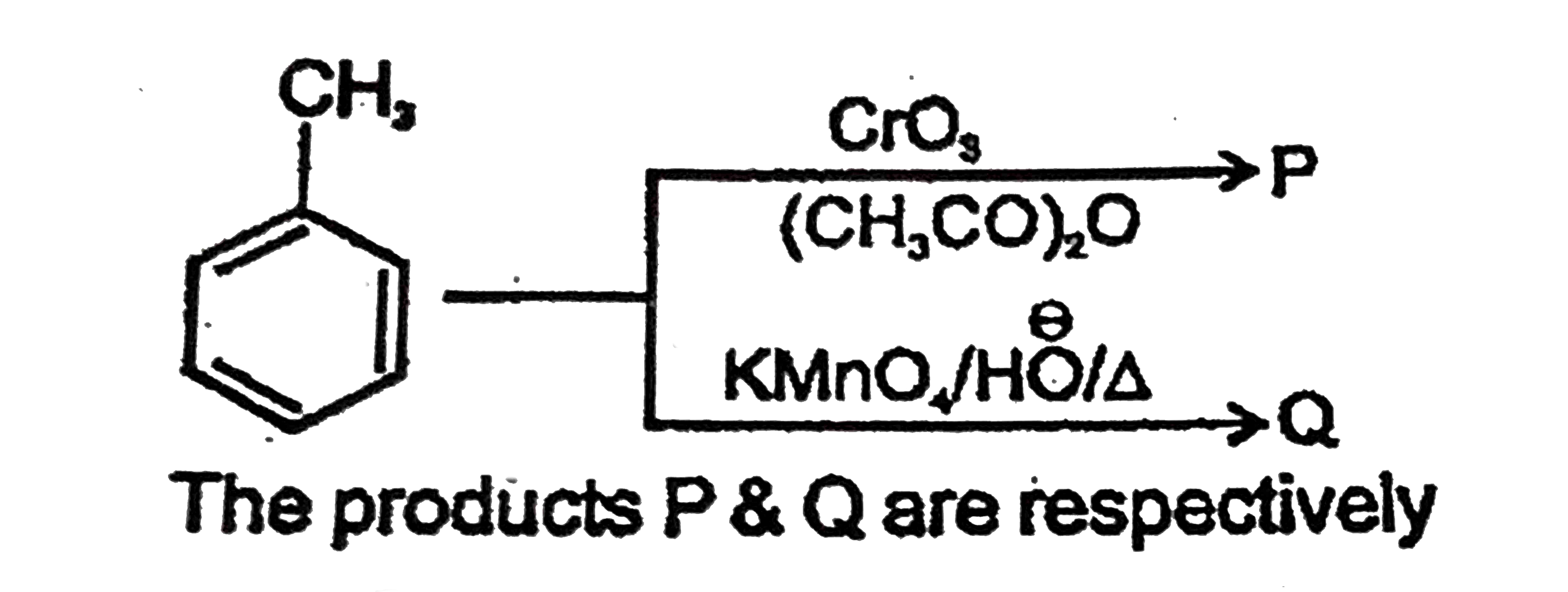Complete Solutions to APSP Part - 1 of chapter ORGANIC REACTION MECHANISMS - II of Class 11 book with complete answers and questions
| Class 11 | CHEMISTRY |
| Chapter | ORGANIC REACTION MECHANISMS - II |
| RESONANCE NEW | APSP Part - 1 |
| Number Of Questions | 30 |
| Academic Year | 2023-24 |

'X' is
View SolutionWhich of the following reactions is not an example of electrophilic substitution in benzene ring?
View SolutionThe reaction of toluene with chlorine in presence of ferric chloride gives predominantly :
View SolutionNitrobenzene can be prepared from benzene by using a mixture of conc. `HNO_(3)` and conc. `H_(2)SO_(4)` . In the mixture, nitric acid acts as a/an -
View SolutionEthylbenzene `+Cl_(2)overset("Light")rarr`(main) compound is :
View SolutionWhich of the following is an `o-, p-`directing but deactivating substituent in an electrophilic aromatic substitution :
View SolutionPresence of a nitro group in a benzene ring
View SolutionThe relative rates of diffusion of substances are
View SolutionIn the free-radical chlorination of methane, the chain-intiation step involves the formation of:
View SolutionWhich of the following is the major product for the given reaction ?

View Solution`1^@` allylic halides are more reactive than `1^@ RX` in `SN^1` reaction.
Allylic carbocation intermediate is stabilished by resonance.
View SolutionWhich one of the following is a free-radical substitution reaction :
View SolutionComplete the reaction
`Ph-CH=CH-CHO overset(PhMgBr) underset(H_(3)O^(+)) to` Product
View Solution
View SolutionTo which of the following compounds `H_(2)` adds most readily?
View SolutionComplete the following reaction

View Solution are `:`
are `:`
View SolutionWhich is most reactive towards `Br_(2)` in the prsence of `FeBr_(3)`?
View Solution`CH_3-CH_2-CH_2-CH_3+Cl_2overset(hv)to` Major product :
View SolutionComplete the following reaction

View SolutionWhich of the following is the predominant product in the reaction of HOBr with propene?
View Solution`Ph-CH=CH_2overset(IC l)to P`, Identify major product 'P' is :
View SolutionWhich of the following reaction is feasible ?
View Solutiono,p-directing group are mostly :
View SolutionFind the final product X,Y,Z of the reaction and which All three products (X,Y,Z) are identical.

View SolutionComplete the following reaction

View SolutionWhen HBr adds to 1-butene in the presence of benzoyl peroxide, the product obtained is
View Solution`Ph-C-=C-CH_(2)-CH_(3)underset(D_(2)SO_(4)//D_(2)O)overset(Hg^(2+)//D^(o+))toA`, A is:
View Solution
Which is correct statement about X and Y.
View SolutionWhich of the following is the best reagent to convert 1-Methylcyclohexene into 2-methylcyclohexanol ?
View Solution
APSP Part - 1 questions and complete solutions for chapter ORGANIC REACTION MECHANISMS - II of RESONANCE ENGLISH of Class 11